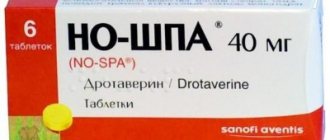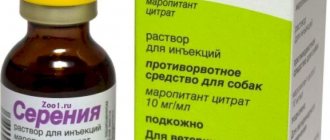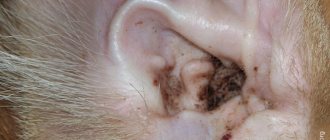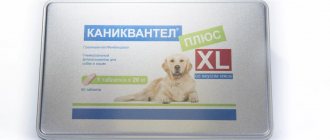In veterinary medicine, many drugs are used to treat infectious diseases, differing in their action and the way they affect the body. Sinulox for dogs is one of the most popular broad-spectrum antibacterial agents. Efficiency is ensured by two active components of the composition; the manufacturer produces antibiotics in the form of tablets and suspensions for injection, which is convenient to use. The medicine is suitable for both dogs and cats, and among the advantages are good tolerance by the animal’s body and a low risk of adverse reactions.
About the manufacturer
The antibiotic Sinulox is patented by the international company Zoetis, which specializes in the development and production of veterinary drugs and equipment. Today the organization is a leader in its field, the success of its products is achieved through many years of experience, the professionalism of more than 9,500 employees and the presence of branches around the world.
The company's key objective is to develop innovative veterinary drugs that undergo strict technological quality control. The Zoetis range includes more than 100 medicines for the prevention and treatment of animals and birds.
Release form
The antibacterial drug Sinulox belongs to the penicillin group of antibiotics of the latest generation. Has an almost immediate effect on most strains of bacteria. Available in two forms:
- Pink tablets for chewing . They are packaged in plates of 10 pieces, each cardboard package contains 50 tablets (each has an engraving with the name of the drug). Available in the following dosages - 50 mg, 250 mg and 500 mg of the active component.
- Suspension . A very oily solution of a light brown hue, intended for intramuscular and subcutaneous injections. In addition to active substances, the composition contains water for ease of use. Available in glass bottles of 40 and 100 ml.
The choice of application form depends on the weight of the dog, the characteristics of the disease and the sensitivity of the animal’s digestive system.
Indications for use
Attention! Before use, consult a specialist.
The drug Sinulox is indicated for dogs for many infections of bacterial etiology. The product is especially popular for the treatment of infectious infections of the skin, mucous membranes of internal organs, excretory, reproductive and respiratory systems. In veterinary medicine it is prescribed for the following diseases:
- stomatitis;
- bacterial cystitis;
- tonsillitis;
- mild forms of enteritis;
- benign neoplasms;
- pneumonia, pleurisy.
Sometimes the drug Sinulox is recommended for use after surgery, removal of certain types of tumors. Amoxicillin in the composition is suitable for complex therapy together with anti-inflammatory and wound healing agents.
special instructions
During the treatment period and for 2 weeks after the last injection of the drug, slaughter of animals for meat is prohibited. The meat of animals forcedly killed before the expiration of 2 weeks can be used for the production of meat and bone meal or for feeding fur-bearing animals. Milk can be used for food purposes 60 hours after the last injection. Milk obtained before the expiration of 60 hours can be used to feed animals after heat treatment. For pseudomonal infection, the use of the drug is not indicated.
Composition and pharmacological properties
The main component of the composition is amoxicillin. This is a penicillin antibiotic with a wide spectrum of action. To enhance the effect, clavulanic acid is added to Sinulox, which enhances the antibacterial properties of the drug. Yeast, erythrosine, cellulose and sodium glycolate are used as auxiliary compounds. The tablets are flavored, making it easier for your pet to take the medication.
The combination of amoxicillin and clavulanic acid in a 4:1 ratio provides a powerful antibacterial effect. It works almost instantly, so the drug is prescribed in a short course.
How does the drug work?
After entering the dog's body, amoxicillin begins to act on the source of the bacterial infection. It destroys the enzymatic system of microorganisms, causing cellular decay and death.
Upon contact with an antibiotic, pathogenic bacteria produce toxic compounds that destroy its structure. To prevent this process, the composition contains clavulanic acid - it protects amoxicillin from the harmful effects. This combination of substances has proven itself in the fight against E. coli, enterococcus, staphylococcus, salmonellosis and other dangerous infections of dogs.
Purpose
The medicine has low toxicity, due to which Sinulox is actively used in veterinary medicine in the treatment of infections of the genitourinary system, digestive tract, upper respiratory tract, oral cavity, skin lesions, etc. Indications for prescribing an antibiotic are:
- enteritis;
- cystitis;
- pneumonia;
- stomatitis;
- otitis;
- tonsillitis and others.
Bacterial enteritis
A dangerous disease in dogs and especially in small puppies is bacterial enteritis. It is characterized by serious inflammatory processes in the intestines. The inflammatory process is caused by bacteria - salmonella or clostridia. The incubation period for small puppies lasts 3 days, for adult dogs – 10 days. Characteristic symptoms of the disease that require immediate contact with a veterinarian:
- lethargic, drowsy state of the pet;
- vomiting and persistent diarrhea;
- temperature increase.
The dog loses weight, the muzzle becomes noticeably sharper, and the sides collapse. When you touch them, the pet tucks its tail and arches its back. The dog does not allow you to touch its belly due to severe pain. You can observe how the pulse is weakened, the dog is breathing heavily, and the mucous membranes acquire a bluish tint.
Otitis
Among other diseases caused by bacteria, otitis media is common in dogs. The development of the disease can be triggered by a decrease in the pet’s immune defense. If the immune system is unable to resist pathogenic bacteria, they penetrate the hearing organs, causing severe inflammation.
In the absence of treatment, the prognosis can be disappointing: the accumulation of pus will provoke perforation (damage, rupture) of the eardrum, and purulent discharge will penetrate into the inner ear and further into the meninges. The best outcome is hearing loss, the worst is purulent meningitis and the death of the pet.
The infection cannot be cured without taking antibiotics. Sinulox is considered an effective antibacterial drug for otitis media. To achieve a quick effect, an injection solution is used. The course of treatment is 5-7 days, during which time all pathogens that cause the inflammatory process are destroyed.
Infections of the genitourinary system
Cystitis, pyelonephritis and other inflammatory diseases of the urinary system bother the pet and cause pain. After examining the animal and determining the causes of the inflammatory process in the genitourinary organs, the veterinarian may prescribe antibiotics. Sinulox is used if the causative agent of the infection is bacteria - staphylococci, streptococci and others.
Cystitis is manifested by the following symptoms:
- frequent and painful urination;
- the presence of impurities in the urine - mucus, blood, pus;
- abdominal wall tension;
- general malaise – weakness, lethargy, elevated body temperature.
If there is a bacterial infection, before prescribing antibiotics, the veterinarian examines the urine culture and determines the sensitivity of the microflora to the drug. If indicated, Sinulox injections may be prescribed.
Instructions for use
Synulox should only be prescribed by a doctor based on the dog’s age, clinical picture of the disease, and the state of the dog’s immune and digestive systems. The effectiveness of antibiotic therapy is achieved by a continuous course of treatment, which cannot be changed or the dosage violated. Features of application depend on the form of release.
Pills
In the form of tablets, Sinulox is prescribed 2 doses daily. The dosage is calculated based on the dog’s weight. Per 1 kg of weight, 12.5 mg of active antibiotic is required. For severe infections accompanied by complications, the dosage can be increased to 25 mg per 1 kg.
The duration of the course is calculated individually; it should not exceed 4 weeks.
You can give tablets in several ways - mix them into food, put them on the back of your tongue, or let them chew on their own. During administration, you need to make sure that the dog swallows the product.
Suspension
The advantage of the injection form of Sinulox is a short course (3-5 days), which is convenient for treating dogs with problems with the digestive system. The frequency of injections is 1 time per day, intramuscular or subcutaneous administration is allowed. The dosage is calculated by weight - 8.75 mg is required per 1 kg (1 ml per 20 kg). To make it easier to calculate the dose, you can use an insulin syringe.
Before injection, check that the needle is dry; clavulanic acid loses its beneficial properties when interacting with water.
Precautionary measures
Special precautions must be taken by the person administering veterinary medicinal products to animals. Penicillins and cephalosporins may cause hypersensitivity (allergy) after injection, inhalation, ingestion, or skin contact. Hypersensitivity to penicillins in a pet owner may lead to cross-reactions to cephalosporins and vice versa. Allergic reactions in people to these substances can sometimes be severe.
Do not handle this product if you know you are hypersensitive to penicillins or have been advised not to handle such drugs. Handle this product with great care to avoid exposure by following all recommended precautions.
If you develop symptoms after exposure, such as a skin rash, you should contact your doctor and show your doctor the instructions for using Sinulox tablets. Swelling of the face, lips or eyes or difficulty breathing are more serious symptoms and require immediate medical attention. Wash your hands after using the drug tablets.
Contraindications and side effects
The advantages of Synulox are that it is well tolerated by the dog’s body. The main contraindication is the presence of an allergy or individual intolerance to the components of the composition. In addition, it is not recommended to use the product during bacteriostatic therapy.
If the dosage is not observed or the course duration is exceeded, the following complications may occur:
- skin rashes, itching;
- disturbances in the process of defecation;
- digestive problems;
- increased lacrimation, the appearance of photophobia;
- swelling of the mucous membranes of the eyes.
If adverse reactions occur while taking antibiotics, you should stop treatment and consult a veterinarian.
Oral diseases
Stomatitis is an inflammation of the mucous membranes of the oral cavity, which in itself is not dangerous, but causes discomfort to the pet due to difficulty eating, which can lead to exhaustion.
The disease develops if pathogenic bacteria penetrate into microcracks and wounds on the mucous membranes. Stomatitis can also be a symptom of another infectious disease in the body. The following symptoms can be observed:
- pain when eating, due to which the dog refuses to eat, chews carefully or tries not to chew, but to swallow pieces of food;
- bad breath, indicating the presence of bacteria;
- increased salivation;
- temperature increase.
In case of stomatitis, the veterinarian first determines the nature of the disease, the presence of pathogenic bacteria in the body, then determines the need to use an antibiotic and selects a drug that will be active against the pathogen.











